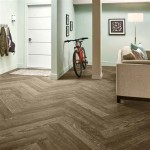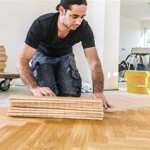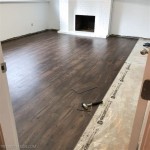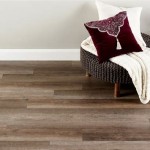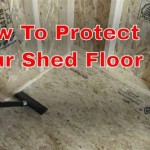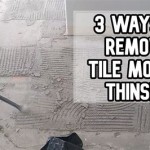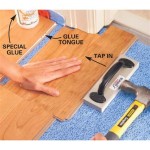Wood Flooring On Concrete: A Guide to Essential Considerations
Enhancing your living space with the timeless elegance of wood flooring is a worthwhile investment. When faced with a concrete subfloor, understanding the unique considerations involved is crucial for a successful installation that will endure for years to come.
1. Moisture Control and Vapor Barriers
Concrete is inherently porous and can release moisture into the air, which can cause wood flooring to buckle and warp. To prevent this, a vapor barrier is essential to block moisture transmission. Polyethylene sheeting at least 6 mil thick and moisture-resistant underlayment provide an effective barrier between the concrete and the wood flooring.
2. Leveling the Subfloor
Uneven concrete subfloors can lead to squeaks and uneven flooring. Before installation, it's essential to level the subfloor using a self-leveling compound. This will create a smooth and uniform surface for the wood flooring to rest on.
3. Glue or Nails?
The method of securing the wood flooring depends on the type of flooring being used and the condition of the subfloor. Glue is typically used for floating floors, while nails are commonly used for engineered wood flooring. Consult with an experienced flooring professional to determine the best installation method for your specific situation.
4. Acclimation and Expansion Gaps
Wood flooring will expand and contract with changes in temperature and humidity. To accommodate these movements, it's crucial to acclimate the wood flooring to the room where it will be installed for several days before installation. Leaving expansion gaps around the perimeter of the room will also allow for natural expansion.
5. Subfloor Preparation
Proper subfloor preparation is essential for a durable and long-lasting wood flooring installation. The subfloor should be clean, dry, and free of debris. If there are any cracks or divots in the concrete, they should be repaired with a concrete patching compound.
6. Choosing the Right Flooring
Not all wood flooring is suitable for installation on concrete. Engineered wood flooring is specifically designed for this purpose, as it has a plywood core that provides stability and reduces moisture absorption. Solid wood flooring, on the other hand, is more likely to be affected by moisture and is generally not recommended for installation on concrete.
7. Professional Installation
While DIY installation of wood flooring on concrete is possible, it's highly recommended to hire an experienced flooring professional. They have the skills and knowledge to ensure a flawless installation that will last for many years.
By carefully considering these essential aspects, you can confidently create a beautiful and long-lasting wood floor on a concrete subfloor that will enhance your home's aesthetics and value for years to come.

Installing Wood Flooring Over Concrete Diy

Hardwood Over Concrete Auten Wideplank Flooring

Getting It Right Wood Flooring Over A Concrete Subfloor Page 2 Of 3 Construction Specifier

Q A Solid Wood Floors Over Concrete Slabs Jlc
How To Install Wood Floors On Concrete Quora

8 Awesome Wood Floor Over Concrete Gallery Solid Hardwood Floors Diy Installation

Concrete That Looks Like Wood Sundek

How Do I Install A Hardwood Floor On Concrete Slab The Carpet Guys

Should You Install Flooring On Damp Concrete Construction

Ask Fred How Do I Install Wood Floor Below Grade Schedule
See Also
